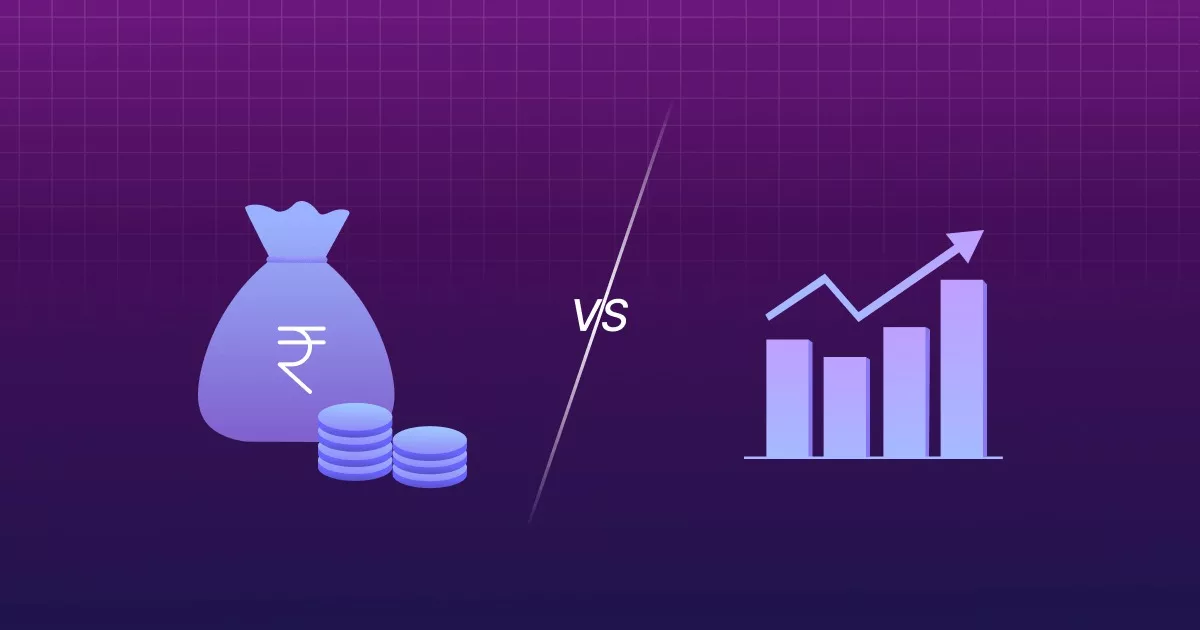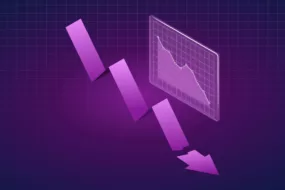
Investing in the stock market can be daunting, especially for beginners. One of the most important decisions that an investor has to make is choosing between ETFs and index funds. These two investment options are similar in many ways, but there are some key differences between them that can make a big impact on an investor’s returns. In this blog, we will discuss the differences between ETFs and index funds and help you decide which one is right for you.
What Are ETFs and Index Funds?
ETFs (Exchange-Traded Funds)
ETFs are a type of investment fund that can be bought and sold on stock exchanges, just like individual stocks. They are designed to track the performance of a particular market index, such as the S&P 500 or the Dow Jones Industrial Average.
Index Funds
Index funds are a type of mutual fund that aims to track the performance of a particular market index, such as the S&P 500 or the NASDAQ. These index funds are passively managed, which means that they aim to replicate the performance of the underlying index, rather than trying to outperform it.
By investing in an ETF or index fund, you can get exposure to a broad range of stocks or other assets, without having to buy individual stocks or assets yourself.
ETF Vs. Index Funds: Key Differences
Passive vs. Active Investing
ETFs are typically passively managed funds that track a specific index or benchmark. On the other hand, index funds can be either actively or passively managed, although the majority are passively managed.
Trading Flexibility
ETFs trade on exchanges like stocks, which means that investors can buy and sell them throughout the trading day. Index funds, on the other hand, can only be bought or sold at the end of the trading day at the net asset value (NAV).
Expense Ratio
ETFs generally have lower expense ratios than index funds, which means investors pay less in fees to invest in ETFs. However, this is not always the case and investors should compare the expense ratios of both ETFs and index funds before investing.
Asset Allocation
ETFs can invest in a wide variety of assets, including stocks, bonds, and commodities. Index funds, on the other hand, typically track a specific index of stocks or bonds.
Market Capitalization
ETFs can be designed to track stocks or bonds of a particular market capitalization, such as small-cap or large-cap companies. Index funds can also be designed this way, but they can also be actively managed to target specific market capitalizations.
Dividend Yield
ETFs and index funds may have different dividend yields depending on the index or benchmark they track and the stocks or bonds included in the fund. It is important for investors to understand the dividend yield of both types of funds before investing.
Benefits of ETFs
Diversification
ETFs offer diversification by investing in a variety of assets such as stocks, bonds, commodities, and currencies. This helps to reduce the overall risk of the investment portfolio by spreading out the investment across multiple assets.
Trading Flexibility
ETFs trade like stocks on the stock exchange, allowing investors to buy or sell them throughout the trading day. This flexibility allows investors to take advantage of market fluctuations and adjust their portfolios as per their investment objectives.
Lower Expense Ratio
ETFs have a lower expense ratio compared to actively managed funds because they are passively managed. This means that the fund manager is not actively involved in selecting stocks or making investment decisions. As a result, the expense ratio of ETFs is generally lower than other mutual funds.
Tax Benefits
ETFs are more tax-efficient compared to other mutual funds because of the unique structure of their creation and redemption process. The process allows for minimal taxable events, such as capital gains distributions, which helps investors to keep more of their investment returns.
Benefits of Index Funds
Diversification
Index funds invest in a variety of companies across different industries, providing investors with diversification and reducing the risk of losses from any one company or sector.
Passive Investing
Index funds follow a passive investing strategy that seeks to replicate the performance of a specific market index. This approach helps investors avoid the higher fees associated with actively managed funds.
Lower Expense Ratio
Index funds typically have lower expense ratios compared to actively managed funds since they do not require a team of professional fund managers to make investment decisions.
Stable Returns
Since index funds track a specific market index, they offer investors a more stable and predictable rate of return over the long term. This makes them a good option for those who prefer a low-risk investment approach.
Drawbacks of ETFs
Trading Costs
When you buy or sell ETFs, you have to pay a brokerage fee, just like you would with stocks. This can add up, especially if you’re making frequent trades. It’s important to keep this in mind when deciding whether to invest in ETFs.
Tracking Error
ETFs are designed to track the performance of an index, but sometimes they don’t track it exactly. This is called a tracking error. A small tracking error is normal, but if it’s too large, it can eat into your returns.
Liquidity Risk
ETFs are traded on stock exchanges, which means that they can be bought and sold like stocks. However, some ETFs can be illiquid, which means there may not be enough buyers or sellers to execute a trade. This can be a problem if you need to sell your shares quickly.
Drawbacks of Index Funds
Limited Asset Allocation
Index funds track a specific market index, which means they only invest in the companies or securities included in that index. This can limit the diversity of your investments, as you may not be invested in other companies or sectors that are not included in the index.
No Active Management
Index funds are passively managed, which means there is no individual or team of experts actively choosing which stocks or securities to buy and sell. This lack of active management can lead to underperformance in certain market conditions or missed opportunities for growth.
Lack of Trading Flexibility
Index funds typically have a fixed portfolio of assets that are not frequently bought or sold. This means that if you want to make changes to your investment portfolio, it may take some time to sell your index fund shares and buy new ones, and there may be costs associated with doing so.
When to Invest in ETFs
Short-term Investment
ETFs are ideal for investors who want to make a short-term investment in the market. ETFs can be bought and sold throughout the trading day, providing the investor with trading flexibility. Additionally, ETFs have low expense ratios, which means that the investor can save on fees. However, it is important to keep in mind that ETFs are not meant for day trading or speculation. It is important to invest with a long-term goal in mind.
Trading Flexibility
ETFs are perfect for investors who want the ability to trade on an intraday basis. This means that the investor can buy and sell ETF shares throughout the trading day. The ability to trade throughout the day provides investors with greater flexibility in their trading strategy. Additionally, ETFs can be traded through any brokerage account that allows stock trading.
Diversification
ETFs provide investors with exposure to a diversified portfolio of stocks, bonds or other assets. By investing in an ETF, investors can gain exposure to an entire market segment or asset class. This is a more cost-effective way to diversify a portfolio than buying individual stocks or bonds. Additionally, ETFs can be used to target specific sectors or asset classes, such as emerging markets or real estate.
When to Invest in Index Funds
Long-term Investment
Index funds are ideal for those who have a long-term investment horizon. This is because the returns on index funds are typically stable and predictable over a long period of time. By investing in an index fund, an investor can benefit from the overall growth of the market, without having to worry about the day-to-day fluctuations of individual stocks.
Passive Investing
Index funds are designed for passive investors who are not interested in actively managing their investments. Passive investors want to benefit from the growth of the market without having to research individual stocks or time the market.
Stable Returns
Index funds are designed to closely track the performance of a particular index, such as the S&P 500. This means that the returns on index funds are typically stable and predictable over time. While index funds are not immune to market fluctuations, they tend to be less volatile than individual stocks, making them a good option for those who want stable returns over the long-term.
Conclusion
ETFs and index funds have their own unique advantages and drawbacks. The choice between them largely depends on your investment goals, trading strategy, and risk tolerance. It’s important to understand the differences between them and assess which one aligns best with your personal financial objectives. Ultimately, both ETFs and index funds can be great investment options for building a diversified and well-balanced portfolio.
FAQs
1. What is the Difference Between ETFs and Index Funds?
ETFs and index funds are both investment options that allow investors to diversify their portfolios by investing in a range of stocks or bonds. However, there are some key differences between the two. ETFs are traded on stock exchanges like individual stocks, while index funds are mutual funds that are bought and sold at the end of the trading day at the net asset value (NAV). Additionally, ETFs tend to have lower expense ratios but may have higher trading costs.
2. Which Investment Option is Better for Long-term Investment?
Both ETFs and index funds can be good options for long-term investment, depending on an investor’s specific goals and risk tolerance. Index funds are generally seen as a more stable option, offering passive investing with stable returns. ETFs, on the other hand, may offer more flexibility in trading and diversification. Ultimately, it’s important to research and compare both options before making a decision.
3. How Do I Choose Between ETFs and Index Funds?
Choosing between ETFs and index funds ultimately depends on your investment goals, risk tolerance, and investment strategy. Factors to consider include the expense ratio, trading costs, liquidity, diversification, and asset allocation. It’s important to do your research, consider your goals, and consult with a financial advisor before making a decision.




